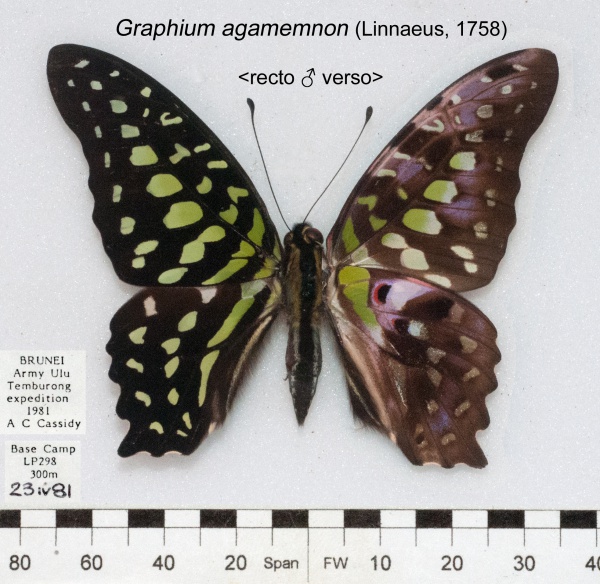Facts About Graphium agamemnon
The Graphium agamemnon, more commonly known as the tailed jay, is a vibrant tropical butterfly from the swallowtail family. With its striking green and black coloration, this butterfly also goes by names like the green-spotted triangle, tailed green jay, or green triangle. Fortunately, it is not a threatened species and can be found in various regions, including Nepal, India, Sri Lanka, Southeast Asia, and Australia. Carl Linnaeus first described the species in 1758.
The tailed jay has a broad range, extending from southern India to Australia. It can be spotted in countries such as Nepal, Sri Lanka, Bangladesh, Myanmar, Thailand, China, Taiwan, and Australia. Interestingly, they have adapted to urban areas and gardens, thanks to the widespread planting of their food source, the Polyalthia longifolia tree, as an ornamental.
These butterflies are known for their energetic and agile flying style, rarely staying still even when they rest. They relish sipping nectar from flowers such as Lantana, Ixora, Mussaenda, and Poinsettia. With a fast-paced life cycle, the tailed jay can produce multiple broods in a year, a trait known as being multivoltine. Their life cycle includes laying eggs on the underside of leaves, larvae that display unique colors and spines, and pupae that attach to leaves. They rely on specific host plants throughout these stages.

 Bangladesh
Bangladesh